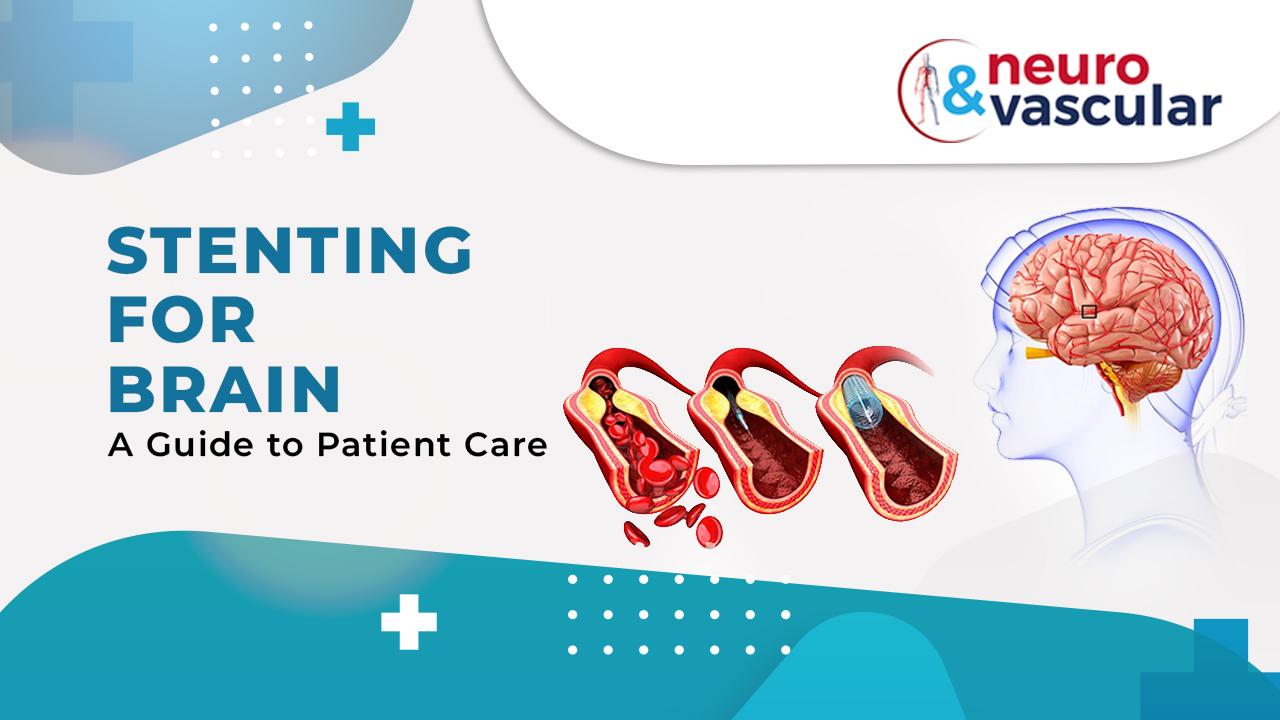
Stenting for Brain: A Guide to Patient Care

Stents which are metallic mesh tubes are indicated for certain conditions in the brain. It helps in maintaining blood flow in blocked blood vessel as well as healing the weak points in brain blood vessels such as aneurysms by providing scaffolding or flow diversion. This stent placement is a revolutionary treatment doctors use for blocked brain blood vessels and brain aneurysm treatment. This ingenious technique involves using a small metal tube to redirect blood flow, safeguarding against potentially catastrophic ruptures. The aneurysm will begin to contract once this prevents blood flow to it.
What does a stent look like?
The appearance of the stent looks like a slender tube-like structure made from a durable metal called nitinol. The size of this medical device boasts small proportions, with diameters ranging about 1/5 inch and lengths measuring around 3/4 inch.
What conditions require stents?
Three different types of brain conditions require stents, which include extracranial stenosis, intracranial stenosis and Brain Aneurysms
● Carotid stenosis:
Blood vessels in the neck may show blocks due to accumulation of fatty material or calcium ( plaques) and may cause decrease blood supply to the corresponding side of the brain presenting with complaints of brain stroke. In conditions where the percentage of block is more than 70%, the stenting is indicated, to improve the blood flow.
● Intracranial stenosis:
Intracranial stenosis occurs when the blood vessels in the brain become narrow due to the buildup of plaques from fat and other substances. This narrowing can lead to blockages and potentially result in a stroke. Carotid artery stenting is often necessary in these cases.
● Brain aneurysms:
Brain aneurysms are weak or thin spots on blood vessel walls that expand and fill with blood. These aneurysms can be caused by multiple reasons. Such as disease, injury, or even present from birth. If an aneurysm ruptures in the brain, it can have severe consequences. Such as stroke, nerve damage, or even death. Additionally, rupture (bursts) can lead to subarachnoid hemorrhage. This is a condition where bleeding occurs between the skull and the brain, potentially causing complications like hydrocephalus.
How do doctors insert the stent?
Brain stent surgery is not an easy process. To successfully insert a stent, an interventional radiologist with expertise in angiography is needed.
Using angiography, a catheter is skillfully inserted through the groin and carefully threaded through the arteries. Depending on the location of the issue, it can be routed to either the neck or brain arteries.
Next, the stent delivery system follows the same path as the catheter, bringing the stent to the designated treatment site. This remarkable device expands as it is positioned, molding to the inner contours of the artery wall.
Once in place, the catheter is removed while the stent remains, ensuring effective treatment.
Navigating the small and winding arteries in the brain is no easy task. It requires the specialized equipment and skills of a skilled professional.
How do stents work?
- When it comes to treating atherosclerosis in the carotid or intracranial arteries, a stent can be a permanent solution for the patient. It opens up those blocked arteries and allows blood into your brain. In this method stents can be a potential stroke treatment or secondary prevention option. They work with angioplasty, which is a technique to widen blockages. First, a balloon catheter improves blood flow by opening the blocked artery. Then, the stent reduces the risk of recurring narrowing while supporting the artery wall.
- When it comes to brain aneurysms, the surgeon inserts a catheter into an artery. Then strategically places detachable coils into the aneurysm. Then the blood clotting process is triggered, effectively obliterating the aneurysm. When the stent is required for scaffolding it is expertly positioned before or after the coil placement as a barrier to prevent unwanted coil bumps. In case of flow diverter stent placement
Who is eligible for a stent procedure in brain?
While medication and lifestyle changes can help many patients with intracranial stenosis, stent placement is only recommended for those with severe stenosis who have not responded to medical treatment. Severe stenosis is defined as 70% blockage or more.
What is the Brain Stent Placement for Aneurysms?
An aneurysm puts you at risk of a potentially deadly burst and bleeding. An interventional radiologist placed a stent at the aneurysm site to solve this. This stent helps in reducing pressure. So that blood can flow safely around it. This stent is made up of flexible mesh material. The stent molds itself into the blood vessel walls during healing by creating a robust pathway for uninterrupted blood flow into normal blood vessel. After some time, the aneurysm gradually clots and dissolves.
Also read: Middle Meningeal Artery Embolization for Chronic SDH: What You Need to Know
Who should avoid Stenting for the brain?
Patients with vasculitis or other inflammatory vasculitis, reversible vasculopathies of the brain should not undergo stent procedures. Additionally, patients with aneurysms should not undergo stent placement if their aneurysm or vessel size does not meet the required criteria. Stents should not be placed if the patient cannot take blood-thinning drugs, or if angiography shows their blood vessels are not suitable for endovascular treatment.
How long does it take to recover from brain stent surgery?
When the brain stent is successfully placed in the blood vessels, blood flow alterations and betterments start immediately. The patient needs to be there in the hospital for couple of days depending upon state of preexisting illness. Most people can return to their regular activities within one to two weeks.
Conclusion
Stenting for brain is an advance in medical practice. It has the potential to help many patients with different conditions. The brain stenting in Hyderabad provides patients with a secure solution for narrowing their blood vessels and treating brain aneurysms. This procedure is relatively new in this medical technology, but there are generally good outcomes for those who undergo with this stenting procedure, when properly selected. If you have any concerns or questions about carotid stenting treatment in Hyderabad, don’t hesitate to reach out to an experienced interventional radiologist. Remember that recovery from a brain stent usually may take a few days, depending on the preexisting illness.
About the Author:

Name: DR . SURESH GIRAGANI
INTERVENTIONAL RADIOLOGIST
DR. SURESH GIRAGANI CONSULTANT INTERVENTIONAL RADIOLOGIST at Apollo hospitals Jubilee Hills has more than sixteen years of clinical experience in vascular interventions with a special interest in neurovascular and peripheral vascular disease interventional procedures.